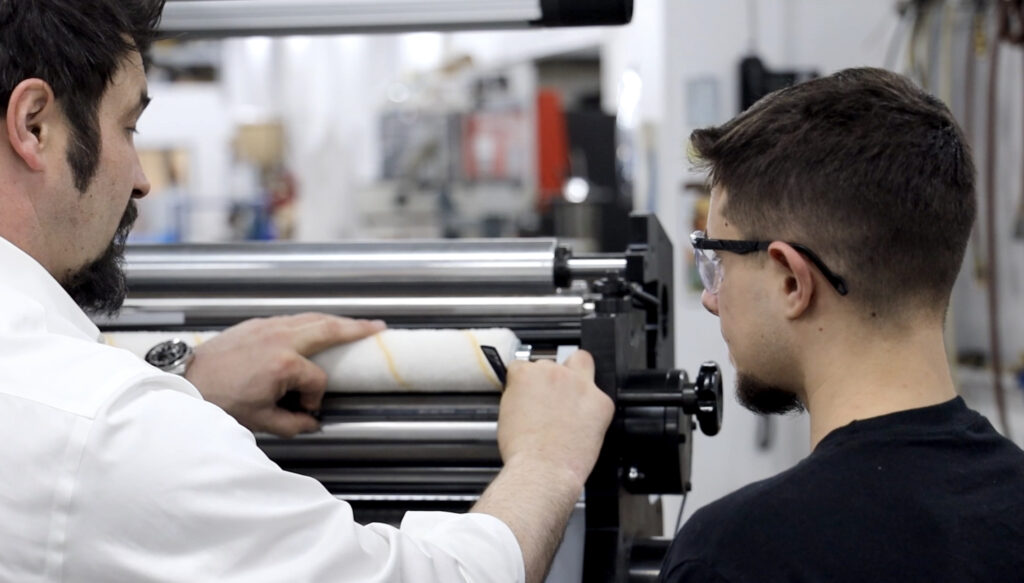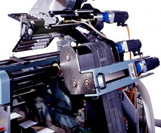Manufacturers are increasingly turning to RFID automation to enhance efficiency, accuracy, and real-time data visibility in their operations. By integrating RFID technology into manufacturing processes, companies can streamline workflows, reduce errors, and gain valuable insights into production activities. RFID boosts productivity and quality control, making businesses more competitive.
Understanding RFID Automation
RFID automation uses RFID systems to identify and track objects throughout manufacturing processes automatically. Unlike traditional barcode systems, RFID does not require line-of-sight and can read multiple tags simultaneously, making it ideal for high-speed and complex manufacturing environments.
Components of an RFID system include:
- RFID Tags: These are attached to items and contain electronically stored information. Tags can be passive (powered by the reader) or active (battery-powered for more extended range).
- RFID Readers: Devices that emit radio waves to detect and read information from RFID tags.
- Antennae: Transmit signals between the tags and readers.
- Middleware and Software: Process the data collected by readers and integrate it with existing enterprise systems like ERP or MES.
By automating data collection and processing, RFID systems reduce manual labor, minimize errors, and provide real-time visibility into manufacturing operations.
Applications of RFID Automation in Manufacturing
Inventory Management
RFID enables real-time tracking of raw materials and finished goods, improving inventory accuracy and reducing stock discrepancies. Automated inventory counts can be conducted without halting operations, leading to more efficient stock management and reduced carrying costs.
Work-in-Process (WIP) Tracking
By tagging components and assemblies, manufacturers can monitor the progress of items through each stage of production. This visibility helps identify bottlenecks, optimize workflow, and ensure the timely completion of products.
Quality Control
RFID systems can automatically verify that the correct components are used and processes are followed, ensuring product quality. In case of defects, RFID data aids in quickly tracing and isolating affected items, facilitating prompt corrective actions.
Asset and Tool Tracking
Manufacturing equipment and tools can be tagged to monitor location, usage, and maintenance schedules. This tracking prevents loss, ensures timely maintenance, and extends the lifespan of critical assets.
Automated Replenishment
RFID can trigger automatic reordering of materials when stock levels fall below predefined thresholds, ensuring continuous production without manual intervention.
Benefits of Implementing RFID Automation
- Enhanced Efficiency: Automated data collection speeds up processes and reduces the need for manual checks.
- Improved Accuracy: Minimizing human intervention decreases the likelihood of errors in data entry and inventory counts.
- Real-Time Visibility: Immediate access to data allows for better decision-making and quicker response to issues.
- Cost Savings: Reduced labor costs, minimized waste, and optimized inventory levels contribute to overall cost reductions.
- Scalability: RFID systems can be scaled to accommodate growing production demands and integrated with other technologies for enhanced capabilities.
Challenges and Considerations of RFID Implementation
While RFID offers numerous advantages, manufacturers should consider potential challenges:
- Initial Investment: RFID tags, readers, and system integration costs can be significant.
- Environmental Factors: Metal surfaces and liquids can interfere with RFID signals, requiring specialized tags and readers.
- Data Management: Handling the large volume of data generated by RFID systems necessitates robust data processing and storage solutions.
- Integration Complexity: Ensuring seamless integration with existing systems may require custom development and thorough testing.
Future Trends in RFID Automation
The integration of RFID with emerging technologies is set to further revolutionize manufacturing:
- Internet of Things (IoT): Combining RFID with IoT devices enables more comprehensive monitoring and control of manufacturing processes.
- Artificial Intelligence (AI): AI can analyze RFID data to predict maintenance needs, optimize workflows, and enhance decision-making.
- Blockchain: Integrating RFID data with blockchain can improve traceability and security in supply chains.
Enhancing RFID Automation with Inlay Insertion Equipment
For manufacturers looking to implement or upgrade their RFID system, high-quality RFID tags and labels are essential. Tamarack® Products offers advanced RFID inlay insertion equipment, such as the MVW Inline RFID Inlay Insertion System, which enables precise and efficient production of RFID-enabled labels and tags. Features include:
- High-Speed Operation: Supports high-speed production.
- Precision Placement: Ensures accurate inlay positioning for optimal performance.
- Versatility: Compatible with various inlay types and label materials.
Manufacturers can produce reliable RFID labels by utilizing quality inlay insertion equipment, ensuring quality and reducing lead times. RFID automation is a pivotal advancement in manufacturing, offering enhanced efficiency, accuracy, and real-time insights. By integrating RFID systems into their operations, manufacturers can streamline processes, reduce costs, and gain a competitive edge in the market.
Tamarack® Products delivers cutting-edge RFID inlay insertion equipment, designed to meet the evolving needs of modern manufacturers. Our solutions offer precision, scalability, and seamless integration to enhance your production capabilities. Contact us today to discover how our expertise can support your RFID automation goals.





